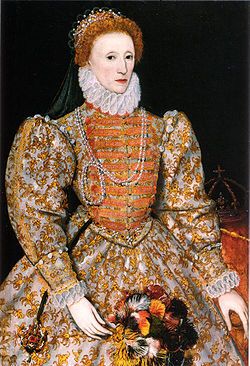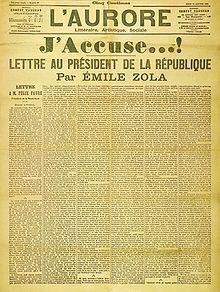This is your morning Open Thread. Pour your favorite beverage and review the past and comment on the future.
Find the past “On This Day in History” here.
January 24 is the 24th day of the year in the Gregorian calendar. There are 341 days remaining until the end of the year (342 in leap years).
On this day in 1848, A millwright named James Marshall discovers gold along the banks of Sutter’s Creek in California, forever changing the course of history in the American West.
The California Gold Rush began at Sutter’s Mill, near Coloma. On January 24, 1848 James W. Marshall, a foreman working for Sacramento pioneer John Sutter, found shiny metal in the tailrace of a lumber mill Marshall was building for Sutter on the American River. Marshall brought what he found to John Sutter, and the two privately tested the metal. After the tests showed that it was gold, Sutter expressed dismay: he wanted to keep the news quiet because he feared what would happen to his plans for an agricultural empire if there were a mass search for gold. However, rumors soon started to spread and were confirmed in March 1848 by San Francisco newspaper publisher and merchant Samuel Brannan. The most famous quote of the California Gold Rush was by Brannan; after he had hurriedly set up a store to sell gold prospecting supplies, Brannan strode through the streets of San Francisco, holding aloft a vial of gold, shouting “Gold! Gold! Gold from the American River!” With the news of gold, local residents in California were among the first to head for the goldfields.
At the time gold was discovered, California was part of the Mexican territory of Alta California, which was ceded to the U.S. after the end of the Mexican-American War with the signing of the Treaty of Guadalupe Hidalgo on February 2, 1848.
On August 19, 1848, the New York Herald was the first major newspaper on the East Coast to report the discovery of gold. On December 5, 1848, President James Polk confirmed the discovery of gold in an address to Congress. Soon, waves of immigrants from around the world, later called the “forty-niners”, invaded the Gold Country of California or “Mother Lode”. As Sutter had feared, he was ruined; his workers left in search of gold, and squatters took over his land and stole his crops and cattle.
San Francisco had been a tiny settlement before the rush began. When residents learned about the discovery, it at first became a ghost town of abandoned ships and businesses whose owners joined the Gold Rush, but then boomed as merchants and new people arrived. The population of San Francisco exploded from perhaps 1,00 in 1848 to 25,000 full-time residents by 1850. The sudden massive influx into a remote area overwhelmed the infrastructure. Miners lived in tents, wood shanties, or deck cabins removed from abandoned ships.[13] Wherever gold was discovered, hundreds of miners would collaborate to put up a camp and stake their claims. With names like Rough and Ready and Hangtown, each camp often had its own saloon and gambling house.

 On this day in 1849,
On this day in 1849,  On this day in 1968, the NBC-TV show, “Rowan & Martin’s Laugh-In”, debuted “from beautiful downtown Burbank” on this night. The weekly show, produced by George Schlatter and Ed Friendly, then Paul Keyes, used 260 pages of jokes in each hour-long episode. The first 14 shows earned “Laugh-In” (as it was commonly called) 4 Emmys. And “you bet your bippy”, Nielsen rated it #1 for two seasons. Thanks to an ever-changing cast of regulars including the likes of Dan Rowan, Dick Martin, Arte Johnson, Goldie Hawn, Ruth Buzzi, JoAnne Worley, Gary Owens, Alan Sues, Henry Gibson, Lily Tomlin, Richard Dawson, Judy Carne, President Richard Nixon (“Go ahead, sock it to me!”), the show became the highest-rated comedy series in TV history.
On this day in 1968, the NBC-TV show, “Rowan & Martin’s Laugh-In”, debuted “from beautiful downtown Burbank” on this night. The weekly show, produced by George Schlatter and Ed Friendly, then Paul Keyes, used 260 pages of jokes in each hour-long episode. The first 14 shows earned “Laugh-In” (as it was commonly called) 4 Emmys. And “you bet your bippy”, Nielsen rated it #1 for two seasons. Thanks to an ever-changing cast of regulars including the likes of Dan Rowan, Dick Martin, Arte Johnson, Goldie Hawn, Ruth Buzzi, JoAnne Worley, Gary Owens, Alan Sues, Henry Gibson, Lily Tomlin, Richard Dawson, Judy Carne, President Richard Nixon (“Go ahead, sock it to me!”), the show became the highest-rated comedy series in TV history.  On this day in 1911, the first
On this day in 1911, the first  On this day in 1801,
On this day in 1801,  On this day in 1853,
On this day in 1853,  On this day in 1865, the United States
On this day in 1865, the United States  On this day in 1919, the
On this day in 1919, the 

 On this day in 1761, the
On this day in 1761, the  The Third Battle of Panipat saw an enormous number of casualties and deaths in a single day of battle. It was the last major battle between indigenous South Asian military powers, until the creation of
The Third Battle of Panipat saw an enormous number of casualties and deaths in a single day of battle. It was the last major battle between indigenous South Asian military powers, until the creation of  On this day in 1898, French writer
On this day in 1898, French writer